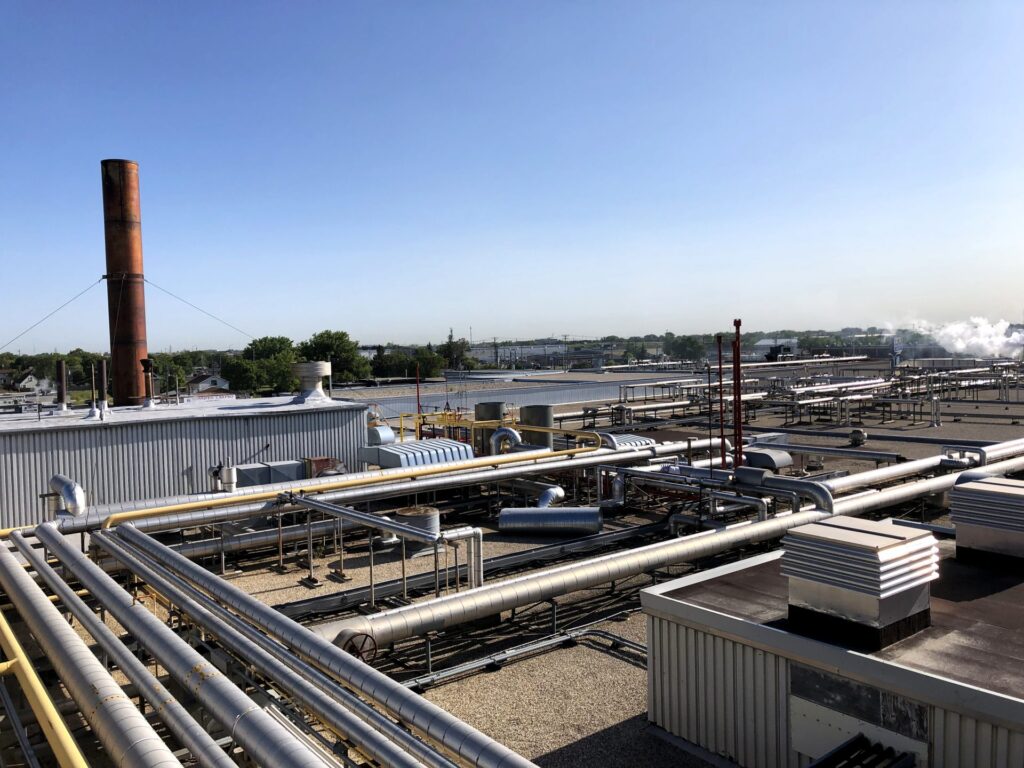Introduction to key systems in manufacturing plants
There are many critical systems that keep a manufacturing plant operating and performing effectively and efficiently, such as boiler, refrigeration, HVAC, compressed air, hot water, and pumping systems. Understanding how these systems operate and their capacities is crucial for reducing downtime, maximizing production throughput, reducing operating costs, and intelligent capital expenditure (CapEx) spending.
Many key systems and their infrastructures are often viewed as constraints for production line expansion, production throughput limits, and CapEx spending. How many times have you heard, “We can’t do this, because our boiler/refrigeration/hot water/compressed air system is too small/too old.”? Or, “We don’t have enough space because of the boiler/refrigeration system/hot water heaters/compressed air system.”? Or how about those projects that you really want to pursue, but can’t, because your CapEx dollars are tied up upgrading these systems or increasing capacity to meet your facility’s needs? To complicate things further, sometimes the experts of your individual systems are the same people who make money selling the equipment to you. This can lead to linear solutions that in the end solve your pain points, but may cost you more in capital or operating costs. Before you accept these obstacles as an inconvenience or the cost of doing business, there is a lot of opportunity in better understanding these systems and equipment to help you develop a smart, cost-effective action plan to get the most out of your systems and make the most informed decisions on your spending.
An example of a system capacity constraint and the value of capacity analysis & enhancement
A classic example of this is seen with compressed air systems that are reaching their system capacities. Plant staff bring up pressure issues with the system and ask for more capacity so that they can focus on production and eliminate the operational headaches that come with insufficient compressed air supply. Instead of just buying another air compressor to provide more supply, detailed metering of the air compressors and understanding the users of compressed air in the plant yield quick wins, such as reduced energy use, as well as increased capacity. Lowering system pressure, using electric blowers, and implementing a compressed air leak detection program reduces operating costs, maintenance costs, and operator headaches, while eliminating the need to purchase an expensive new air compressor.
To illustrate this approach with a real-world example, a small industrial bakery we worked with was weeks away from purchasing a new $40,000 air compressor. Metering and analysis of the compressed air system highlighted a few quick – yet significant – wins, which resulted in energy savings, increased capacity, and eliminated the need for to buy a new air compressor. For a small industrial bakery, $40,000 is a lot of saved money!
Capacity analysis & enhancement case study
What happens when sales are projected to increase by 50% in the next few years? Sounds like business is booming, which is fantastic! But, as the sales teams are high-fiving and celebrating with happy hour cocktails, the production team must get to work to ensure that the plant can handle this production throughput increase. This is exactly what happened to a large industrial winery in Niagara Falls, Ontario. The two key systems that would see increased demand were the boiler and chiller systems, which provide precise heating and cooling to the wine making process, which are critical for the product’s quality.
Detailed flow and temperature metering on multiple glycol loops, amperage logging on refrigeration compressors and condensers, and boiler feedwater metering was conducted during the peak months of harvest as well as outside of harvest. This metering data, along with production throughput volumes and weather data, were analyzed to quantify chilling and steam requirements per tonne of production (see image below for an example of metering results for an ammonia system). This showed the winery’s operations staff that there would be sufficient chilling and steam capacity for the next few years, and hence no major capital changes were required for those specific systems. As part of this capacity analysis assessment, additional energy conservation opportunities were identified to reduce operating costs and increase capacity.

Conclusion
Manufacturing facilities are complicated – all the key systems are interconnected and crucial for production quality, throughput, employee comfort, reliability, and profitability of the plant. Having a thorough understanding of your key systems and their capacities will lead to reduced operating costs, downtime, and frustration, and it will allow you to make intelligent fact-based CapEx spending and prioritization decisions.
You can learn more about our capacity analysis services here, and if you have any questions or would like to discuss your capacity needs, please feel free to get in touch!


